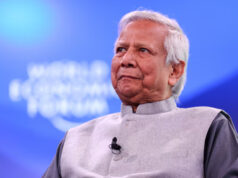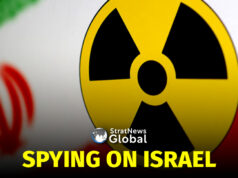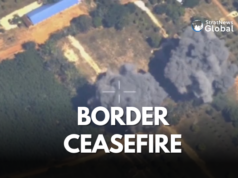NEW DELHI: The Sri Lankan Cabinet’s approval on Monday to develop the West Container Terminal (WCT) of the Colombo Port jointly with India and Japan under a public-private partnership model has come after considerable back-channel diplomacy and negotiations for over a month involving India, Japan and Sri Lanka. The WCT will be developed on a Build, Operate and Transfer basis for a period of 35 years as a public-private partnership with Adani Ports and Special Economic Zone Limited, its local representative John Keels Holding PLC and the Sri Lanka Ports Authority.
The Cabinet passed it after the high level negotiating committee held talks with the Indian High Commission, the Japanese Embassy in Colombo and representatives of the Indian company. However, no investor has been named by the Japanese government so far. Sources said that Adani Ports and Special Economic Zone Limited along with its local partner will hold 85 per cent equity in the project, while the remaining 15 per cent will be with the SLPA. This formula was proposed by the Sri Lankan government last month in order to retain 100 per cent ownership of the East Container Terminal (ECT).
Local media reports had suggested in early February that the shareholding was split this way to allow India to match the shareholding that China has in Colombo International Container Terminals (CICT), where China’s state-owned China Merchant Port Holdings (CMPH) enjoys 85 per cent stake. While the ECT is already built and developed, the WCT would need to be developed by India in much the same way that CICT was developed. Initially, under a 2019 tripartite agreement among India, Japan and Sri Lanka, the ECT was to be developed jointly but fierce opposition from trade unions representing labour in the ECT compelled the Sri Lankan government to abandon the proposal and instead suggest an alternative.
New Delhi was not pleased with the Sri Lankan cabinet’s decision but intervention at the highest levels from the Indian government and President Gotabaya Rajapaksa’s personal outreach to the Indian leadership defused the crisis, paving the way for further negotiations on the WCT project, sources said. Also, President Gotabaya Rajapaksa was assured by the labour unions that they would not oppose foreign (read Indian) investment in the WCT. In a letter to the President, the Trade Unions Collective proposed the following last month as a compromise formula:
1. The ECT’s constructed areas to be fully owned and operated by the Sri Lanka Ports Authority (SLPA)
2. From the SLPA reserves of $ 250 million, invest $100 million in the aforementioned developed area of the ECT to be fully used for operations by the SLPA
3. To complete the construction of the remaining areas of the ECT in three years under the SLPA and following the expiration of the SAGT (South Asia Gateway Terminals) agreements in 2029, this terminal also be taken over and operated by the SLPA
4. To agree to any future government initiatives to grant positive investments in the West Container Terminal
5. To seek Cabinet approval for the ECT to be 100 per cent fully operated and managed by the SLPA
6. To seek necessary Cabinet approval for the development of the ECT and the West terminal.
Initially unhappy with the Sri Lankan decision to back out of the ECT MoU signed by the previous government, India finally relented last week allowing further negotiations culminating in Monday’s cabinet approval. India could not have given up the opportunity to have a presence at the Colombo port since over 70 per cent of transshipment business at the Colombo port is to and from India. While both ECT and WCT would have similar capacity to handle shipping traffic, those in the know say WCT would have an added advantage in terms of deeper depth at 20 metres, although it needs to be built from scratch. The ECT has been functional for years but needs modernization.




